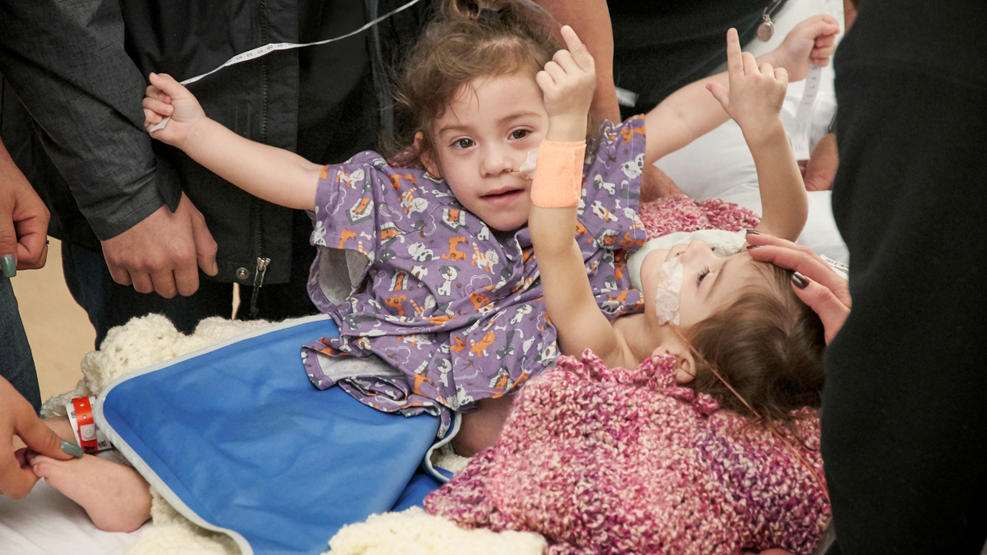PALO ALTO—Two year-old conjoined twin sisters, Eva and Erika Sandoval, underwent a 17-hour surgical separation at Lucile Packard Children’s Hospital Stanford last week.
Erin Digitale, a pediatrics science writer for the Office of Communication and Public Affairs at Stanford’s medical school, explained that the Sacramento-born twins were connected facing each other from the lower chest down. They each had one stomach, heart, and an individual pair of lungs, though they shared a diaphragm muscle and adjacent structures, as well as components of their digestive system. Between the two sisters, they had one liver, one bladder, and three legs.
Following the operation, Eva and Erika retained parts of their previously shared organs, though they each have only one leg and will likely need a prosthetic.
According to the Sacramento Bee, doctors advised Aida Sandoval to rethink her decision to give birth to the twins. Doctors warned that complications could harm her in addition to the children. Aida followed through with her decision to give birth, asserting that she “wasn’t giving up no matter what they looked like or how hard it got.”
Pediatric surgeon, Dr. Gary Hartman, led a team of 50 practitioners to perform the operation after meeting the Sandovals in 2014. Aida delivered the twins at Lucile Packard in August 2014, where they spent the first seven months of their lives. Upon their return to their Sacramento home, the girls experienced numerous health complications such as UTIs due to their shared bladder, and had trouble holding down food and drink due to their shared digestive system.
“There are the UTIs; there’s the muscular skeletal issue – we’re seeing curvature of the spine,” he said. “These things would continue if they were to remain conjoined. With this growth disparity, Erika becomes more and more at risk of injury, just because Eva is so big and so strong,” told The Sacramento Bee.
Only a few hundred surgeries have been performed to separate conjoined twins. The University of Maryland Medical Center shared that as few as one in every 200,000 births produce conjoined twins; 50 percent of conjoined twins are stillborn; and 35 percent survive only one day.
On Monday, December 12, reports announced that Eva and Erika had been recovering in the same hospital room, though they were in different beds. The medical team transferred Erika to Eva’s bed that day.
Practitioners at Lucile Packard, including Hartman himself, contended that they were satisfied with the surgical results, and that the girls are “doing great.” The medical team predicted a 30 percent chance that one or both girls would not make it through the operation, yet neither of them have had any major complications since being separated.
KRON 4 News shared a video of the girls, their family, and members of the surgical team following the procedure.





